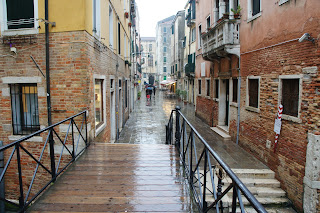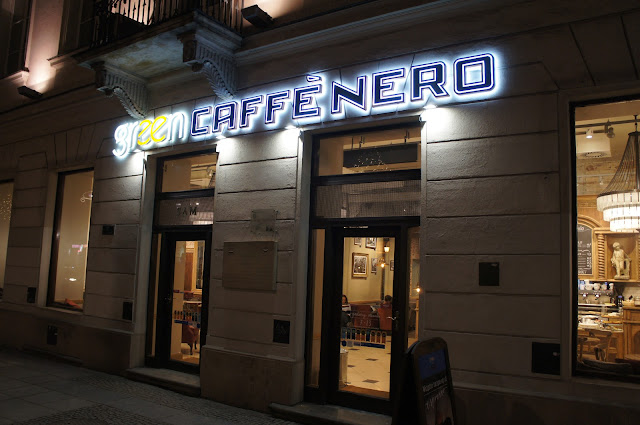JACOB JR, MY JEWISH WORLD. THE JEWISH VENICE WITH THE GUETTO

 On March 29, 1516, the Venetian Republic created the first ghetto on a small island, in the north-western of Cannaregio. The residentes were removed and replaced within a week by Jews already in Venice. This was a period in which the city sought to keep a watchful eye on all foreigners: the French, English and Spanish embassies were also relegated to Cannaregio. There had been a metal foundry (ghèto) in the parish, which has traditionally been the source of the name, although the etmology is far from clear. The French writer Alice Beecker-Ho presentes a number of valid alternatives: gouda-(h), separation and ghetta, herd.
On March 29, 1516, the Venetian Republic created the first ghetto on a small island, in the north-western of Cannaregio. The residentes were removed and replaced within a week by Jews already in Venice. This was a period in which the city sought to keep a watchful eye on all foreigners: the French, English and Spanish embassies were also relegated to Cannaregio. There had been a metal foundry (ghèto) in the parish, which has traditionally been the source of the name, although the etmology is far from clear. The French writer Alice Beecker-Ho presentes a number of valid alternatives: gouda-(h), separation and ghetta, herd. Jews within Venice therefore found a secure place to live despite the restrictions imposed on them, and were soon joined by others fleeing persecution in central Europe. They built two Synagogues in the ghetto: the Schola Grande Tedesca and the Schola Canton. The pragmatic Venetian Republic later exploited the economic advantages of allowing Levantine Jews to settle there - charging the residentes for rente, water, the cost of the compulsory nightwatchmman and all services.
The population was swelled by the arrival of Marrani Jews, expelled from Spain and Portugal when they refused to convert. As the reputation of the ghetto spread, the population (about 700 in 1516) grew, and when the English traveller Thomas Coryat visited in 1608, he recorded as many as 6,000 inhabitants. The Ghetto Vechio (old ghetto, though it was never than the original) and later the Ghetto Novissimo were added to accomodate the growing population.
Living conditions were cramped and insanitary. Rooms could be reached only through other families' living space. The gates were unlocked at dawn and locked by sunset and all residentes were required to wear yellow headgeat or a badge. In what was, for a time, a tolerant Venice, Jews were not forced to convert and the ghetto became a place of study and scholarship; Money lending and the sale of some goods, such as jewellery and fur, was allowed. Christians attended concerts in the ghetto, and Christians architects and buiders created Synagogues. This Jewish melting pot had a lasting cultural impact on Venetian language, cuisine, music and dance.
By 1797 disease, war and politics had shrunk the population of the ghetto to 3,000. Napoleon's troops brought and end to the Republic of Venice and the to the ghetto; they burned down the gates, and French principals of liberty, equality and fraternit allowed the ghetto's inhabitants at last to be free and equal. The poorest Jews remainedin the ghetto, but mny others left for other parts of the city, where they integrated, buying palacetes on the Grand Canal and taking part in political life. Some contributed actively to the fight against Austrian occupation.
Race laws in Italy in 1938 affected the Jewish community dramatically. Jews were barred from the Lido beach, and dangerous discrimination began. After German troops arrived in 1944, Venetian Jews of all ages were gathered in the ghetto's central campo and from there deported. Most of them never returned. A monumento now commemorates this shameful event. Its seven bronze reliefs are dedicated to the six million victims of the Holocaust. It is the work of Arbit Blatas, a Lithuanian Jew. The panels are monted on a wall bellow the barbed wire left by the Germans. Na eight panel, The Last Train, stands alone, inscribed with the names of the deported Venetian Jews. There are roughly six hundred Jews in Venice today; those in the ghetto include the residentes of the Casa di Riposo, a home mainly for elderly Jews.
To visitors:
 |
| Café Upupa |
Kosher bread in the Paneterria Volpe Kosher bakery in the ghetto Vecchio. After looking at the powerful monumento commemorating Jewish deportation, visitors can walk around the Ghetto Vecchio with its two striking Levantine and Spanish Synagogues and finish in the Ghetto Novissimo. The wealthy Spanish Jews built their Synagogue inn the Ghetto Vecchio with its entrance at ground level. It has a beautiful interior with a carved pulpit and rich decoration, but visits can only be arrenged through the Jewish Museum. There is a little bridge crossing the canal between the original Ghetto Nuovo and the Ghetto Vechio, from where local gondola tours can be arranged with the resident gondoliers.
To eat my suggestion is the Restaurant and Café Upupa, where every thing is fantastic!!! The food and the staff, inside and ouside. I prefer the tables outside where i can witness the past and present life passing through my eyes.
Shalom! Aleichem.
Suporte cultural: Jacob Jr. B.A.C.E., avec L'Integration d'Association avec Israel et dans le Monde/Cz.















Comments
Post a Comment